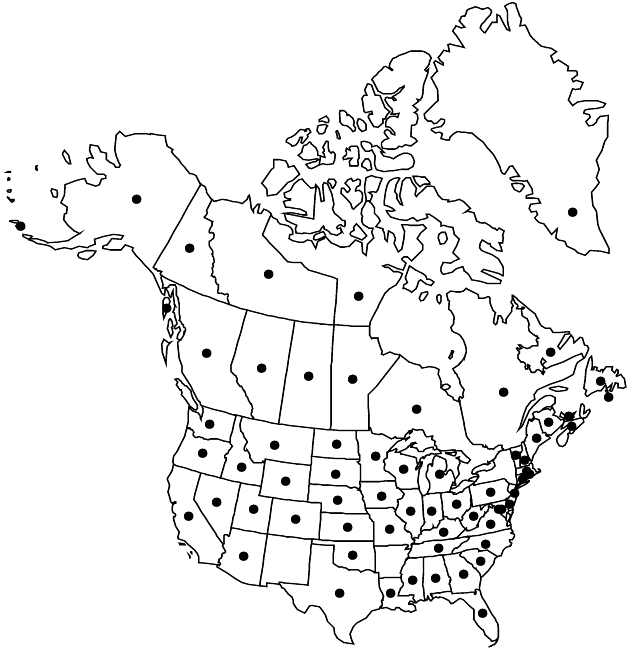Senecio vulgaris
Sp. Pl. 2: 867. 1753.
Annuals, (10–)20–50(–60+) cm (taprooted). Herbage glabrous or sparsely and unevenly tomentose when young. Stems usually 1. Leaves evenly distributed; petiolate; blades ovate to oblanceolate, 2–10 × 0.5–2(–4) cm, bases tapered, margins lobulate to dentate, ultimate margins often secondarily dentate to denticulate (distal leaves sessile). Heads 8–20 in loose, corymbiform arrays. Calyculi of 2–4(–6+) bractlets (prominent, black-tipped, lengths about 1/4 phyllaries). Phyllaries ± 21, 4–6 mm, tips usually green, sometimes black. Ray florets 0. Cypselae usually sparsely hairy, sometimes nearly glabrous. 2n = 40.
Phenology: Flowering early spring (through summer in far North).
Habitat: Disturbed sites
Elevation: 1–1000 m
Distribution

Probably Greenland, St. Pierre and Miquelon, Alta., B.C., Man., N.B., Nfld. and Labr., N.W.T., N.S., Nunavut, Ont., P.E.I., Que., Sask., Yukon, Ala., Alaska, Ariz., Calif., Colo., Conn., Del., D.C., Fla., Ga., Idaho, Ill., Ind., Iowa, Kans., Ky., La., Maine, Md., Mass., Mich., Minn., Miss., Mo., Mont., Nebr., Nev., N.H., N.J., N.C., N.Dak., Ohio, Okla., Oreg., Pa., R.I., S.C., S.Dak., Tenn., Tex., Utah, Vt., Va., Wash., W.Va., Wis., Wyo., Eurasia.
Discussion
Senecio vulgaris has not been collected in the Canadian Arctic north of Hudson Bay.
A widely scattered weed of Eurasian origin, Senecio vulgaris is particularly abundant in southern areas of cool damp winters or northern areas of cool damp summers.
Selected References
None.
